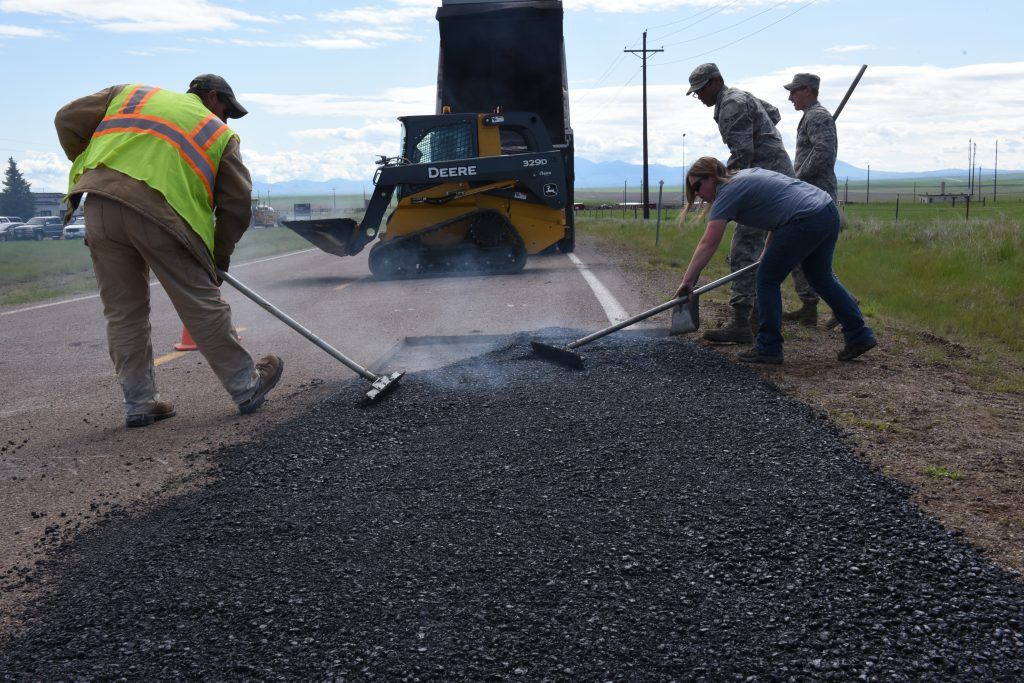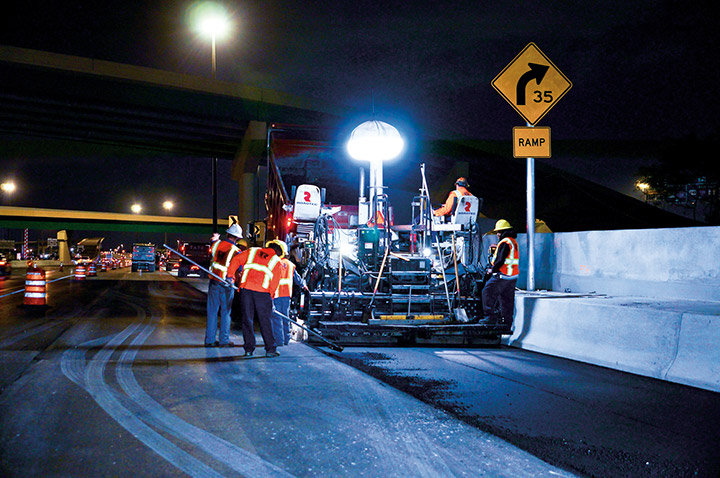Improve Building Worth and Capability with Hot Mix Asphalt Paving Providers
Improve Building Worth and Capability with Hot Mix Asphalt Paving Providers
Blog Article
Opening the Keys of Warm Mix Asphalt Technology
Checking out the depths of hot mix asphalt technology reveals a world where precise formulations and meticulous procedures converge to form our roads and framework. The fusion of binders, accumulations, and fillers isn't just a building and construction task yet a tactical orchestration of durability and effectiveness.
Significance of Warm Mix Asphalt
Hot Mix Asphalt plays a crucial function in contemporary facilities development due to its toughness and cost-effectiveness. As the most frequently used paving material for roadways, highways, and vehicle parking lots, Warm Mix Asphalt provides a series of benefits that contribute to its significance in building tasks. One key advantage is its ability to withstand heavy web traffic loads and rough weather, supplying a trusted and lasting surface for transportation networks. Furthermore, Warm Mix Asphalt is cost-effective in both first building and lasting upkeep, making it a recommended choice for numerous infrastructure projects.
The durability of Hot Mix Asphalt stems from its composition, which includes accumulations, binder, and filler products that are meticulously chosen and mixed to meet details efficiency needs. In general, the significance of Hot Mix Asphalt in infrastructure development can not be underrated, as it proceeds to be a cornerstone of modern-day building and construction techniques.
Parts of Asphalt Mixes
The structure of asphalt mixes contains carefully chosen aggregates, binder, and filler materials that are essential for attaining certain efficiency demands. Accumulations are the primary component of asphalt blends, supplying stamina and security. These aggregates can be all-natural, such as gravel or smashed rock, or artificial, like recycled materials from old sidewalks. The binder, generally asphalt or asphalt concrete, holds the accumulations together and offers versatility and longevity to the mix. The selection of the binder is important as it directly influences the mix's efficiency in various weather condition problems. Fillers, such as moisturized lime or Rose city concrete, are made use of to improve the mix's workability and aging resistance. Angled Parking.
The combination and proportion of these elements play a significant role in figuring out the top quality and performance of the asphalt mix. Engineers very carefully make the mix to meet certain demands, considering elements like web traffic quantity, environment problems, and sidewalk life-span. Correct option and balancing of aggregates, binder, and fillers are crucial for creating long lasting, lasting asphalt sidewalks.
Combining and Production Methods
As soon as the aggregates are chosen, the binder, often asphalt concrete, is contributed to bind the materials together. The binder's quality and amount dramatically impact the mix's adaptability, resistance, and strength to environmental aspects. Additionally, fillers like moisturized lime or Portland cement might be incorporated to boost details attributes of the asphalt mix, such as its workability or moisture resistance.
Throughout production, the aggregates and binder are heated up, normally in between 250-325 ° F(121-163 ° C ), to help with mixing and ensure proper covering of the aggregates. The blending procedure needs to be detailed to achieve an uniform mix that promotes the wanted performance qualities of the asphalt. Different techniques, such as set blending or drum blending, are used to accomplish consistent and top notch asphalt blends for building projects.
Factors Impacting Asphalt Efficiency
Factors affecting asphalt performance encompass a variety of variables that affect the longevity, durability, and total high quality of asphalt pavements. One crucial element is the high quality of products used in the asphalt mix. The type and source of aggregates, the binder quality, and the ingredients all play a considerable duty in identifying the performance of the asphalt sidewalk. The rank of aggregates is important as it influences the mix's resistance, workability, and security to fracturing and rutting.

Ecological conditions likewise affect asphalt performance. Temperature variants, wetness seepage, and traffic lots can all influence the structural integrity of the sidewalk. Design considerations, such as pavement density and drainage, are crucial in ensuring the long-term performance of the asphalt pavement. By thoroughly considering these engineers, elements and contractors can maximize asphalt performance and enhance the life span of pavements.
Sustainable Practices in Asphalt Technology

Furthermore, the development of warm-mix asphalt (WMA) modern technologies has actually obtained traction in recent years. WMA enables the manufacturing and positioning of asphalt mixes at lower temperature levels contrasted to standard hot-mix asphalt, leading to reduced power usage and greenhouse gas exhausts. In addition, making use of porous asphalt blends can aid alleviate stormwater runoff concerns by permitting water to penetrate via the sidewalk and into the ground, promoting natural water purification and recharge procedures. By implementing these lasting practices, the asphalt market can add to building an extra ecologically friendly and resistant infrastructure network.
Final Thought
To conclude, warm mix asphalt modern technology plays an essential function in contemporary facilities development due to its sturdiness and cost-effectiveness. By meticulously stabilizing parts, using proper blending strategies, and thinking about various factors, engineers can produce high-quality asphalt mixes that withstand rush hour loads and harsh climate condition. Welcoming lasting techniques, such as using recycled products and warm-mix innovations, further boosts the ecological friendliness of asphalt technology.
Blending and production techniques in warm mix asphalt innovation involve the precise mix and processing of aggregates, binder, and fillers to develop a sturdy and high-performance asphalt mix.Elements affecting asphalt efficiency encompass an array of variables that affect the resilience, longevity, and overall top quality of asphalt pavements. Lasting methods in asphalt technology incorporate numerous efforts aimed at reducing the environmental influence of asphalt production and paving procedures. By incorporating redeemed asphalt pavement (RAP) and recycled asphalt tiles (RAS) into brand-new asphalt mixes, the market can dramatically decrease the intake of raw materials and power, while also reducing garbage dump waste.
WMA permits for the production and placement of asphalt mixes at lower temperature levels compared to standard hot-mix asphalt, resulting in reduced energy intake and greenhouse gas emissions.
Report this page